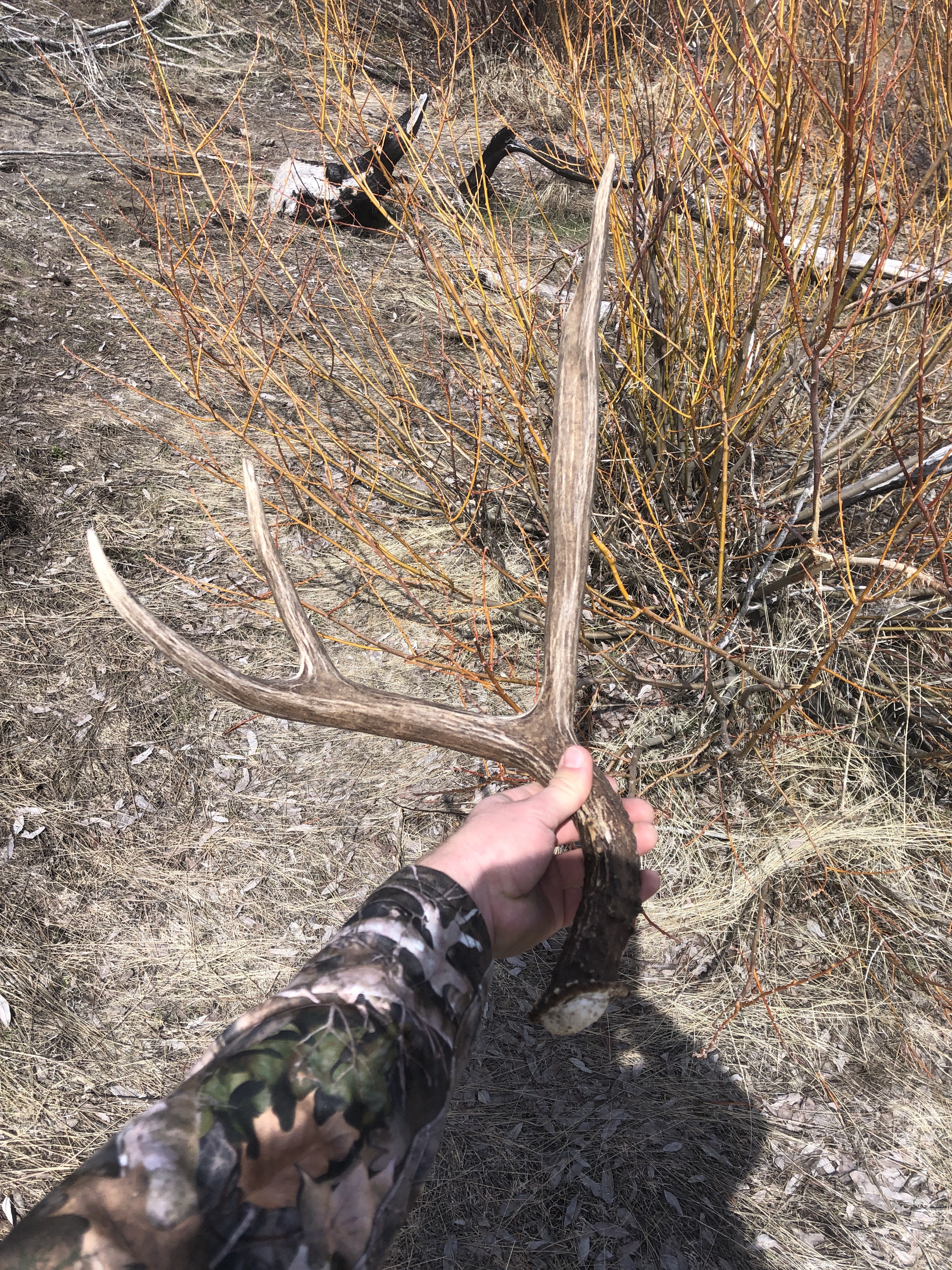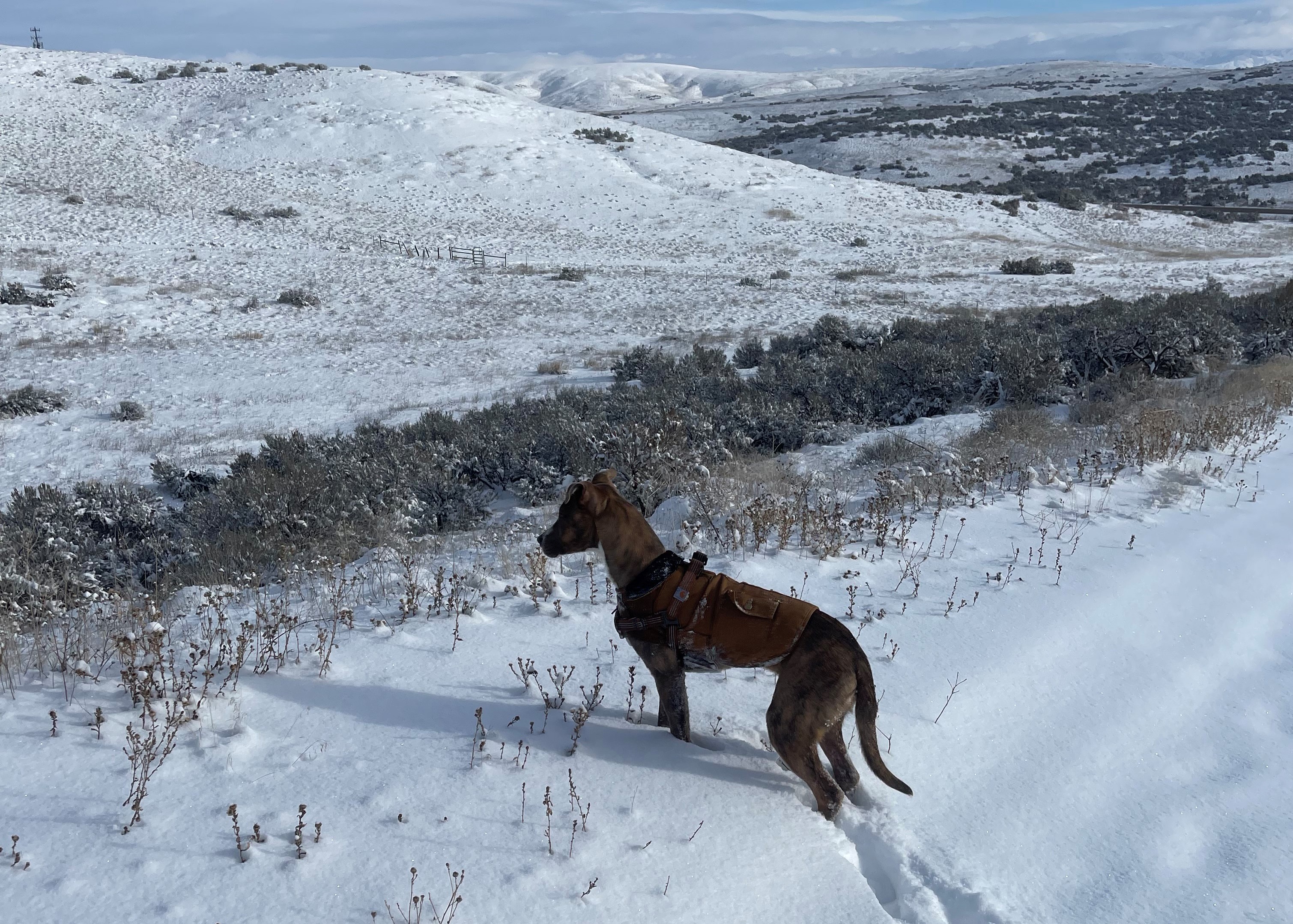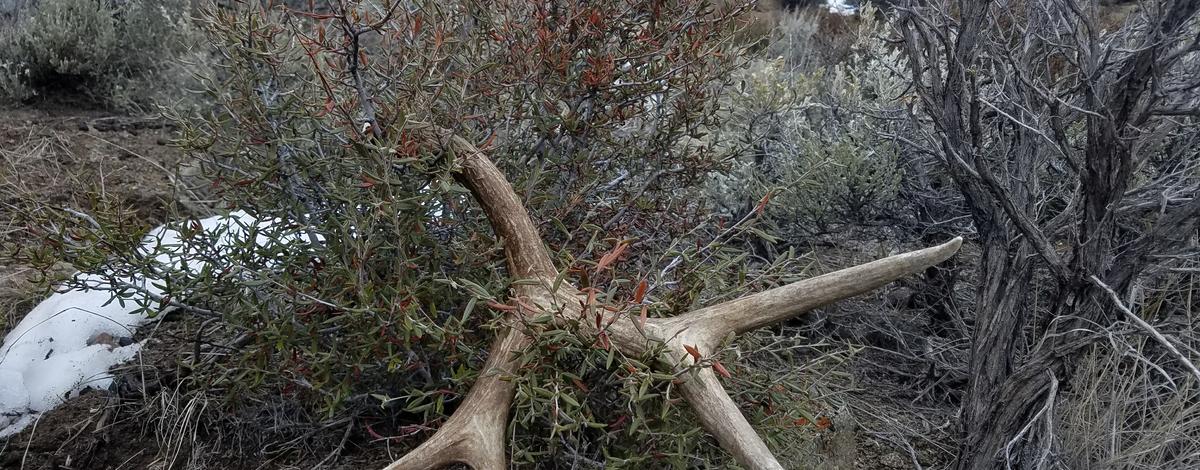On Feb. 2, Punxsutawney Phil – aka, the fuzzy little varmint that miraculously forecasts the winter-spring transition on Groundhog’s Day – indicated there would be six more weeks of winter this year. The bigger takeaway from Mr. Phil is an important reminder that winter is not over for wintering deer and elk, so keep that in mind before you start shed hunting.
Shed hunting is a popular activity and an exciting remedy for cabin fever. Armed with nothing more than a good set of eyes, looking for a deer or elk’s shed antlers in late-winter and early-spring is a highly accessible hobby for those squirming like birddogs for the next outdoor adventure.
Shed hunting is accessible for all types of folks, hunters and nonhunters, youngsters, etc. You can bring your friends, your family and enjoy a day outdoors and maybe come home with a natural prize.

But unlike other hunting seasons, there aren’t set open and close dates or daily bag limits. Being respectful of wintering wildlife is part of the sport. Chances are, if it feels too early to start shed hunting, it probably is.
"Wintering big game animals are very susceptible to any kind of disturbance whether it is from passing motorists, domestic dogs or shed hunters in late winter and early spring," said Toby Boudreau, Fish and Game's deer and elk coordinator. "There's growing concern over shed hunters putting additional stress on wintering big game in many areas of the state."
Chalking up a winter season as “mild” is no excuse to hit the hills early, either. Deer and elk still rely on fat reserves to get through winter, mild or not, and with nutrient-dense spring vegetation still weeks away, bumping deer and elk off their winter ranges while looking for sheds can have potentially lethal effects.
Shed hunters can alleviate potential negative impacts by following these simple steps while still enjoying the activity.

1. Leave them alone
Deer and elk are often found in small and large herds at lower elevations. Many will be loafing or eating, and it’s important that they be allowed to rest undisturbed.
It’s no secret that deer and elk spook easily. When one whiffs a human wandering through their winter range, their instinct takes over to head off for the next safe drainage, which can deplete their energy stores, especially if those disturbances are constantly repeated by the next person, or group of people.
Shed hunters are often big game hunters themselves, and responsible ones recognize that not pressuring deer and elk in winter is not only the respectful thing to do, it also increases that herd’s chances of carrying over more animals into spring, summer and hunting season in the fall.
2. Respect private lands and follow all road and area restrictions
Like all hunters, shed hunters should check with a landowner before venturing on to their property in search of antlers.
Access permission doesn’t just apply to private land. Some public lands are temporarily closed during winter and early spring to provide deer and elk with disturbance-free wintering grounds.
The same goes for motorized vehicles. Certain public lands, including Fish and Game’s Wildlife Management Areas, are often closed to unauthorized motorized vehicle traffic and can only be accessed by foot or on horseback.
In addition, even if motorized access is allowed on designated roads and trails, shed hunters should also seriously consider the potential impact to wildlife and damage they may cause to roads and trails when the ground is wet. Keep in mind that just because you can drive somewhere doesn't mean you should.
For questions about travel management plans or areas protected, contact your local U.S. Forest Service, Bureau of Land Management or Fish and Game regional office.

3. Control your dog, or leave it home
You may have trained Rover to ignore deer and elk, but that’s no reason to let your pooch run hogwild through the foothills. If deer and elk can sense a human tiptoeing through the sagebrush a half-mile away, they can definitely sense a bounding Labrador retriever with a jangling collar. And they’re likely to see all canines as predators, so in their eyes, your friendly, harmless dog is no different than a coyote or wolf seeking its next meal.
If shed hunting with your dog, keep it close, under control, and if you see big game animals, head elsewhere.
4. Hunt a place to hunt
Glassing for sheds and wildlife from a hilltop can be a useful tool in a shed hunter’s toolkit. Using a spotting scope or even just binoculars can save a person some time and energy combing the hillsides with their eyes instead of their thighs.
Modern optics can be your friend for shed hunting just like they are when hunting. You can use them to spot shed antlers from a distance, but you can also use them to spot far away herds and know to avoid those areas, at least for the time being. When the animals have moved on, you can return and look for sheds.
Also remember that during winter, the bucks (and by association, their antlers) typically aren’t hanging around the does, which tend to be down at lower elevations. Utilizing optics to find far-off bucks or bulls up at higher elevations can be a good strategy for shed hunters scouting locations where antlers might drop later in the season. For mule deer, that means around December and January, and for bull elk, March and early April.
The main point of this shed hunting story
It’s not complicated. Next time you’re out hiking around or hunting for antlers, if you see wintering wildlife, find another route. Glass the hillsides from the trailhead, or look for recent sign like fresh hoof prints or scat on the ground. Chances are, if you’re seeing does and cows, you’re in the wrong area anyways. Be patient, those higher-elevation sheds will still be there later in the season.
So trust your gut, sharpen those eyes and avoid putting stress on wintering deer and elk.

